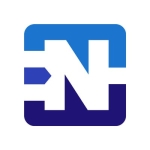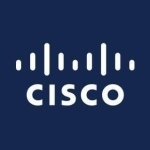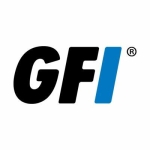What is our primary use case?
We're slowly migrating our on-premises solutions to the cloud. We implemented the next largest size VM for the PA-7050s because we're using 7050s on-premises, due to the bandwidth requirement of 100 GBS.
After changing our firewalls to 7050s last year and this year, both our internal firewalls and our border firewalls are 7050s.
How has it helped my organization?
Having embedded machine learning in the core of the firewall to provide inline real-time attack prevention is something that will greatly enhance our abilities and some of the things that we're doing. We deal with it daily now, versus a time when an incident only occurred every so often. In fact, we see incidents all the time, which include things like phishing attacks. Having some of the functionality inside the firewall
I would rate Palo Alto's machine learning capability, which secures our network against rapidly evolving threats, pretty high. We own a product that I want to get rid of by Cisco, called Stealthwatch. It generates alerts and it's really built for East-West traffic. Of the alerts that we get, 99.9% of them are already blocked by the firewall. I'm not really worried about my North-South traffic because Palo Alto is there. For what they have in the box and the different subscription models, I'm not worried because Palo Alto does such an excellent job of catching stuff.
The biggest improvement to our organization since implementing Palo Alto is that there are a lot of things I no longer have to worry about. There are a lot of things that I used to do, that I don't have to do anymore. For example, I don't have to worry about putting up a honeypot. It's superfluous now because I've got default deny and there is no sense in opening up the border to allow people to come onto my network just to go to the honeypot.
The basic IDS/IPS is taken care of, so I don't need to purchase a product like FireEye. I'm not worried about my core, critical systems.
This next-gen firewall platform has definitely helped us to eliminate security holes. Comparing it to Cisco, which is port-based, a port can be spoofed. This is something that we see every day. When going from a port-based paradigm to an application-based paradigm, there is no comparison. It is more granular, which allows me to be more specific about, for example, port 80 traffic. Port 80 has any number of applications that it can be but if I specify applications, I can pick up all of the port 80 traffic. This means that I can make sure that they cannot spoof an SSH connection as a port 80 connection.
As a growing shop, we have been trying to integrate and get something that we can use as a single pane of glass, and we're getting there. Palo Alto has helped a lot. For example, the new feature for us is the data lake, which allows us to send logs anywhere. This is something that we couldn't do before, so this solution has enabled us to do a little bit more and get rid of some tools.
I don't feel that there is much of a trade-off between security and network performance. Our layer-two network is very robust and I build around them. The architecture is based on what our networking can do, capacity-wise. We haven't had to adjust anything, even when we were running the smaller Palo Alto units, to make things function.
What is most valuable?
Wildfire has been a very good feature. It allowed us to get rid of our honeypot machines, as well as our IDS/IPS solution. When we put it on the border, it was blocking everything that we were getting ahead of time, and we weren't getting any hits. This includes URL filtering, spam prevention, and anti-virus.
We are using a data lake for our log storage. Because our Splunk license is only so large, we couldn't do a lot of logging. Palo Alto does not create small logs, like a Cisco box. In fact, with Palo Alto, you can't capture all of your logs.
From a layer three network perspective, Palo Alto is a workhorse that gives us the best value.
This solution provides a unified platform that natively integrates all security capabilities, which is 100% important to us. This is a great feature.
The user interface is beautiful. They've done their homework on UI design. There are small little tweaks but that's really a preference more than functionality.
What needs improvement?
One of the downsides of logging with Palo Alto is that we do not capture the beginning of a session. It only captures at the end of the session. This means that if we're trying to mitigate something, such as an incident that happened, we can't say definitively that it happened at a particular time. The reason is that Palo Alto keeps track of every session that happens and if it were set up to do that, we would overload the firewall and overload the logging of anything because we do terabytes worth of data every day.
Having a single pane of glass, where we can see all of the stuff that we have to be able to react to, would be very helpful. We're a small shop but we have to cover the entire security spectrum. It makes it hard because we have to wear many hats. A single pane of glass where we can put alerts and other information would make our life a lot easier. As a small EDU, we just don't have the resources that the private companies have, so we have to try to find the best bang for the buck.
From a documentation standpoint, there is room for improvement. Even Palo Alto says that their documentation is terrible. It may be true for any company, where you're going to find documentation that is outdated or has not been kept up to date, but that's my main complaint.
For how long have I used the solution?
I have been using Palo Alto Networks NG Firewalls for between 10 and 15 years.
What do I think about the stability of the solution?
The stability is fire and forget. You don't have to worry about it. I've had to babysit Cisco devices in the past but I've never had to do the same with Palo Alto.
I've always had really good assets over the years and in all, they have changed perhaps two or three of them. Overall, they've been wonderful.
What do I think about the scalability of the solution?
The scalability is wonderful. In the last iteration that I did, I folded 12 different firewalls into one box, across campus, without any problems with network degradation.
Without our two boxes, we have 16 firewalls set up. There are two of us responsible for maintaining the system, and our job titles are cybersecurity network engineers.
The way the interfaces are set up makes it really easy to use. Also, the different routing protocols that you can use within the box make life easy when it comes to setting them up.
The product covers the entire university. We use it at the edge for one of the departments, and it acts as their edge firewall. They pay for their solution and we maintain it for them.
We have deployments in other campuses, as well.
As we segment the network, depending on the zoning, we will be adding new interfaces to do certain things, such as setting up DMZs.
How are customer service and support?
The support has been wonderful. I have not had any bad support that I can think of over the years. They've always been there.
Which solution did I use previously and why did I switch?
Prior to Palo Alto, we used a combination of solutions. This included honeypot machines, and products for IPS/IDS.
We used to be a Cisco shop and I'm glad that we are no longer one. I've been trying to get rid of Cisco for years. The problem with them is that it's unwieldy. It's an old-school way of doing things. For example, everything is port-based. They tried to get into the next-gen firewall space, but the way they grow is that they buy other companies and try to combine technologies to make them work. That doesn't work.
One thing that I've never liked about Cisco, and still don't like, is that if I did an OS upgrade, I was guaranteed that I would be there for at least three to five hours. This was for a simple OS upgrade. Palo Alto has made my life a lot easier from that perspective, which is something that I really appreciate.
Outside of the problem with the OS upgrade, security was becoming more prevalent at the time because of hackers. Cisco was just port-based, and we wanted to move to something that was mobile and more granular. We wanted something that would give us better security and Cisco just didn't have it.
We don't use the DNS security capability with Palo Alto because we use Cisco Umbrella for that, and it works great.
How was the initial setup?
The initial setup is very easy. I can do it in my sleep. The process will take between 15 and 20 minutes for a new deployment. If it's an existing system that you're moving stuff over from, it depends on whether it's Palo to Palo or from something else to Palo. It can take between two and three hours, depending on how many rules there are, and the other things that you have to set up. Once you're up and running, it takes no time to debug it.
Comparing the initial setup to a Cisco device, Palo Alto is much easier. With Cisco, you can't do a simple reset to factory default settings without breaking it. The time I did this, it took me two weeks to finally get it up and running, and I had to call the Cisco SEs to come in and fix it. That's how bad it was. Setting up Cisco is a nightmare.
In comparison, setting up a Palo Alto is child's play. It's like ABCs versus a university course when it comes to getting something set up in Cisco. We have run into problems with Palo Alto in the past but for the most part, it's an easy process.
What about the implementation team?
When we first implemented Palo Alto, we hired a consultant, ProSys, to assist us. They know our network. They've been with us for years and they've got some Palo Alto experts. The reason we asked for their help is that we didn't know anything about Palo Alto until after we took the courses.
One of the problems at the university, in general, is that we don't do a lot of these processes every day. This makes it hard for most universities to be able to do a lot of these more complex setups on their own without getting outside help. The people who are in big businesses that deploy these things on a daily basis get to see this stuff all the time. Universities don't, so we normally have to rely on outside help.
Overall, our experience with ProSys was good. We like working with them.
What's my experience with pricing, setup cost, and licensing?
Palo Alto is not a cheap solution but it is competitive when it comes to subscriptions.
The hardware is something that you can buy all day long, regardless of the vendor. It's when you start adding in all of the subscriptions that it is either going to make or break the budget. All things considered, Palo Alto is comparable.
There are several extra features available and what you use depends on what you want to do with the firewall, and how it's going to be deployed. AV is an option, the Threat Prevention app is extra, along with URL filtering, and WildFire. You won't have all of the options on all of the servers. For example, the internal servers won't be doing any web surfing, so the requirements are a little bit different.
I'm more worried about my building to building, East-West traffic because I can't afford to put a Palo Alto in every building. Instead, I put a Palo Alto in front of me to deal with the North-South traffic.
Which other solutions did I evaluate?
We knew about Palo Alto and that's what we wanted, so we did not evaluate other vendors or products.
I've worked with my SE on this with at least four or five other schools that did not use Palo's, but since turned to use them. I speak with my SE often, and I also speak with my colleagues at other schools about my experiences. I generally explain what my experience with Palo Alto is compared to what I've had with other firewalls.
What other advice do I have?
I don't want to become a Palo Alto-centric shop. We can use certain cloud features that they have, such as SaaS products. However, I choose not to, so that we can have a little bit more flexibility in what we do.
When we were a pure Cisco shop, we saw the problems with doing that. Palo Alto does a really good job at everything they do but, I just want to make sure that from my university's perspective, we don't get stuck. If all of a sudden, somebody else comes out with another product, we don't want to be stuck with a specific vendor, unless they are definitely the best solution.
We use other products in addition to Palo Alto to help along the way. For example, we use Corelight from Bro Zeek, Terracotta, and other things that I can stream together and send to our SOC to look at. We also have XDR, although it's not a fully functional one because we don't have the endpoint component. That is what is killing a lot of EDUs because we just don't have the budget or the money to be able to go out and buy all of the products that help us to function the way we need to.
In the NSS Labs Test Report from July 2019 about Palo Alto NGFW, 100% of the evasions were blocked. For a C-level person, that's great news. They read those types of things. As a technical person, it's important to me because it makes my life easy.
Palo Alto sells a next-generation firewall called the PA-400 series, and depending on what a company's bandwidth needs are, it would be a good choice. For example, if they're not doing anywhere close to a gig worth of traffic, such as in a small office, home office, or small business, then it would be a good solution. It also depends on what the business does. If there isn't much traffic then a PA-400 would be fine.
If a colleague of mine at another company were to say that they are just looking for the cheapest and fastest firewall, based on my experience with Palo Alto, I would tell them that they get what they pay for. Palo Alto is not cheap but at the same time, their product is not really comparable with others. It's like comparing apples to oranges.
If you consider Fortinet, for example, they call themselves a next-generation firewall but they really aren't. They are what you call a GPO, which is related to policies. It is important that you look at what other people do and how they do it, but for the most part, there's not anybody out there doing what Palo Alto is.
Another one is Cisco. They do the same thing that Palo Alto does, although it takes three Cisco boxes to do what a single Palo Alto box does.
I would rate this solution a ten out of ten.
Which deployment model are you using for this solution?
Hybrid Cloud
If public cloud, private cloud, or hybrid cloud, which cloud provider do you use?
Microsoft Azure
Disclosure: PeerSpot contacted the reviewer to collect the review and to validate authenticity. The reviewer was referred by the vendor, but the review is not subject to editing or approval by the vendor.
















